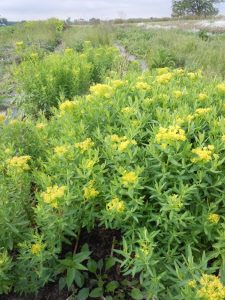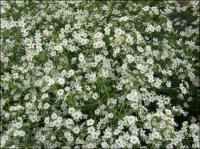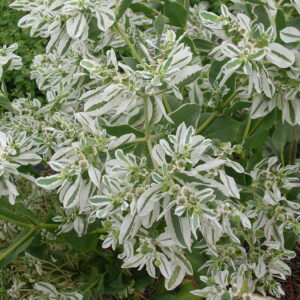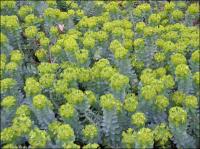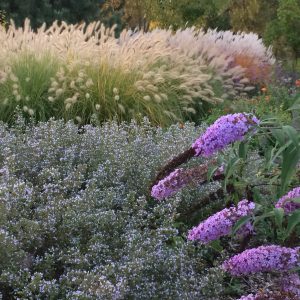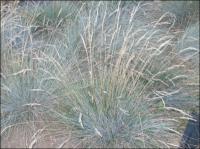Shop
Showing 305–312 of 788 results
-
Eupatorium sessilifolium Upland boneset Z 4-8b
Showy, flat to dome-topped, platter-like, numerous small-flower clusters of white bloom July to September
Showy, flat to dome-topped, platter-like, numerous small-flower clusters of white bloom July to September
Size: 3-5’ x 12-24”
Care: Shade to part shade in moist well-drained to dry soil (one of few dry shade flowers)
Native: Maine to Minnesota south to Kansas, east to Georgia. Wisconsin native (endangered, threatened or of special concern in 8 states – Indiana, Iowa, Maine, Michigan, Minnesota, New Hampshire, Vermont & Wisconsin
Wildlife Value: nectar attracts bees and butterflies. Foliage is food for their caterpillars. Deer & rabbit resistant.English botanist Rev. John Bannister (1654-1692) collected this in colonial Virginia. He was shot and killed by misadventure while collecting plants. Described by Scottish botanist Robert Morison (1620-1683) in Historis Plantarum Univeralis Oxoniensis pars tertia (vol. 3) 98, published posthumously in 1699.
-
Euphorbia colorata syn. E. collorata Perennial poinsettia
Chartreuse bracts in spring and redish stems and leaves in autumn.
OUT OF STOCK
Chartreuse bracts in spring and redish stems and leaves in autumn.
Size: 12-16 x 12
Care: sun in dry to moist well-drained soilRoot used as purgative according to Gould’s Dictionary of New Medical Terms (1905). Collected on the Mexican Boundary Expedition c. 1850.
-
Euphorbia corollata Flowering spurge Z 4-7
Small white flowers (bracts), like a baby's breath but better, July & August. One of the best prairie natives, but slow to mature.
Small white flowers (bracts), like a baby’s breath but better, July & August. One of the best prairie natives but slow to mature.
Size: 36' x 24" spreading slowly
Care: sun in well-drained to moist well-drained soil. Drought resistant.
Native: Canada to Florida and west through the plains, Wisconsin native
Wildlife Value: deer resistant. Its pollen & nectar feed endangered Karner Blue butterfly as well as other small butterflies, numerous bees, wasps and flies. Several birds eat the seeds.A favorite medicine among native Americans. Cherokee rubbed the plant’s juice on skin to cure cancer. Also used to remedy tooth aches and gonorrhea. Winnebago cut a 2.5” long root to clear stomach and steeped leaves for a baby’s colic. According to Breck (1851), “One of the most elegant species peculiar to the United States.”
-
Euphorbia marginata Snow-on-the-mountain reseeding ANNUAL Let seeds fall in autumn
Clean white variegated leaves and flowers (bracts), very showy midsummer to fall. Use caution with internal milky sap.
OUT OF STOCK
Clean white variegated leaves and flowers (bracts), very showy midsummer to fall. Use caution with internal milky sap.
Size: 18” x 10”
Care: sun moist well-drained soil, drought tolerant.
Native: Plains from Dakota to Texas
Size: Wonderful cut flower just be careful of the milky sap.Sioux crushed leaves in water and boiled it for a liniment to remedy swelling; boiled whole leaves in water to increase milk for new mothers. Collected on Lewis and Clark expedition three times, once July 28, 1806 along Marias River. A “most elegant species.” Breck, 1851.
-
Euphorbia myrsinites Donkeytail spurge Z 5-8
Chartreuse umbels at stem tips in early spring contrast succulent blue-gray foliage encircling the reclining stem.
Chartreuse umbels at stem tips in early spring contrast succulent blue-gray foliage encircling the reclining stem.
Can not ship to: Colorado.
Size: 4” x 12”
Care: Sun in well-drained soil
Native: Western Asia
Awards: Royal Horticultural Society Award of Merit.Euphorbia was named for Euphorbus, physician of Numibian King Juba, father of Ptolemy (c. 50 B.C. – 20 A.D.) Reputedly Euphorbus used spurge to remedy the King’s enlarged stomach. Euphorbus’s brother was Augustus Caesar’s physician. Myrsinites is a Greek word meaning “resembling myrtle.” This plant described by Swiss botanical scholar Conrad Gesner in his book Horti Germaniae published in 1541.
-
Euphorbia polychroma Cushion spurge syn. Euphorbia epithymoides Z 4-9
May – June a clump of flashy chartreuse bracts frame each flower altogether growing in a dome 12-18" tall and wide on erect, sturdy stems. In fall foliage turns orangey-red.
May – June a clump of flashy chartreuse bracts frame each flower altogether growing in a dome 12-18″ tall and wide on erect, sturdy stems. In fall foliage turns orangey-red.
Size: 16" x 24"
Care: Sun, moist well-drained humusy soil.
Native: Central and Southern Europe
Awards: Royal Horticultural Society Award of Garden Merit.Polychroma means many colors referring to the fact that the foliage changes colors. Named by Swedish botanist Linnaeus 1753.
-
Fall Garden for sun
Fall Blooming Garden for sun.
ARCHIVED
Note: This collection is not currently for sale. This is an archive page preserved for informational use.
Fall garden for Sun Size : Height x width* Bloom color
3 Aster cordifolius – Blue wood aster 2-3’ x 2-3’ blue
1 Boltonia asteroides – Bolton’s aster 5-6’ x 3’ white
1 Chrysanthemum ‘Clara Curtis’ 2’ x 2’ pink
1 Imperata cylindrical – Japanese bloodgrass 16-20” x 12” red leaves
1 Miscanthus purpurascens – Flame grass 4-5’ x 3-4’ orange-red leaves
1 Nipponanthemum nipponicum – Nippon daisy 2-3’ x 2-3’ white
1 Pennisetum orientale – Oriental fountaingrass 2′ x 2′ pink
1 Persicaria affinis – Dwarf fleeceflower 8-12” x 3’ red
3 Sedum sieboldii – October daphne 4” x 8” pink
3 Sedum spurium ‘Coccineum’ – Dragon’s blood 6” x 24” redAll plants are perennials.
If planted together in one garden these make a 36 square foot garden. **Most of these plants get wider over time by spreading roots or by self-seeding . -
Festuca ovina var. glauca Blue fescue Z 4-10
Short mound of silvery blue spiky grass tufts. In summer short spikes of blue-green flowers.
Short mound of silvery blue spiky grass tufts. In summer short spikes of blue-green flowers.
Size: 12" x 10"
Care: full sun, well-drained soil
Native: temperate areas in Europe
Wildlife Value: host for larvae of a few butterfliesFestuca is Latin meaning “grass stalk..” This variety described and named in 1881


